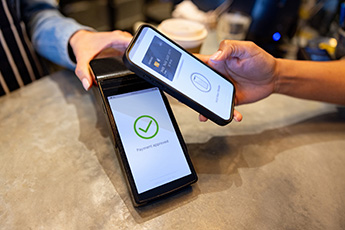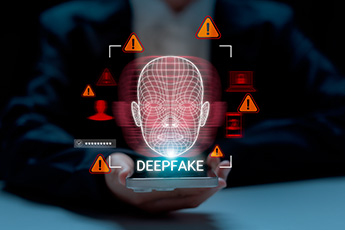People have been regarding the palms of hands as something mystical for thousands of years. The roots of palmistry are thought to have come from India, as hand reading was referenced in the Indian Vedas religious text. By 2000 BCE, palmistry had become a profession, as evidenced by admonishments in ancient scriptures instructing monks not to read palms for money. In China, medical texts included how to read lines in the hand to help diagnose disease. References to palmistry are found in the Old Testament and the Koran. The unique characteristics of palms are helpful in more than just predicting your future, though.JPMorgan Chase is now piloting technology to enable people to pay using either their palms or faces at select merchants that utilize their payment processing services. People buying products in these select stores enroll for the services. Then, at checkout, they can scan either their palm or face at a special point-of-sale terminal. If the pilot is a success, Chase will roll out the service to all of its US merchant clients.The Rise of Biometric-Based PaymentsGlobal biometric-based payments are expected to reach a value of $5.8T with 3B users by 2026, as the pandemic accelerated the desire for contactless, in-store payments, according to Goode Intelligence. The UK-based research firm predicts biometric payments will split the contactless market share with digital wallets.Community financial institutions (CFIs) can also take advantage of the explosive growth of biometric payments via their own merchant payment processing services, or soon, via the Mastercard or Visa-branded debit and credit cards they issue. Participants in Mastercard’s pilot, Biometric Checkout Program, offer consumers the option to enroll in services in participating stores or at home, through a merchant or identity provider app. Visa’s pilot, using fingerprint recognition, is through Utah-based Mountain America Credit Union and Bank of Cyprus, the national bank for the Republic of Cyprus, before it’s rolled out more broadly.Biometric-based payments allow for faster checkout times and offer more convenience to both consumers and retailers. According to Deloitte, it provides an added layer of authentication and consumer protection, especially as the biometrics tools are continuously refined. Biometrics can be divided into physical and behavioral biometrics. Physical biometrics use trait analysis to prevent synthetic identity fraud, while behavioral biometrics analyze how consumers type, use their touchscreen, and navigate through mobile apps to catch fraudsters attempting to impersonate a consumer.Addressing Privacy ConcernsFor Visa’s pilot, fingerprint biometric data is stored only on the card to ensure that a cardholder’s data is protected.Mastercard is working with partners including NEC, Payface, Aurus, PaybyFace, PopID, and Fujitsu Limited. All of these partners are “adhering to an overarching framework of minimum standards, specifications and guidelines that address security, biometric performance level, and data protection in the context of in-store biometric payments,” according to Mastercard's recent press release.Biometric Checkout Program is governed by Mastercard’s principles for data responsibility and was created to provide guidelines around the collection, management, and use of consumer data. The company’s data principles include:
- Layers of security to protect consumer data, which includes tokenization and encryption.
- Being transparent about data collection and how it is used and shared, as well as giving consumers the option to opt out of their data being used in data or web analytics, as well as marketing efforts.
- Continually innovating so that the consumer is always the central focus of data collection through improved products, services, and experiences.
- Exercising deliberate practices in data use to reduce bias and inaccuracies.
The Benefits of Biometrics
It may seem like a hard sell to consumers for CFIs to incorporate biometrics-based payments into their merchant payment processing, given the sensitive nature of physical and behavioral biometrics, but the data says otherwise. A 2022 FICO consumer survey found that 67% of consumers preferred biometrics such as fingerprint identification as an authentication choice.
In addition to its convenience and speed, Deloitte also reported that biometrics can:
It may seem like a hard sell to consumers for CFIs to incorporate biometrics-based payments into their merchant payment processing, given the sensitive nature of physical and behavioral biometrics, but the data says otherwise. A 2022 FICO consumer survey found that 67% of consumers preferred biometrics such as fingerprint identification as an authentication choice.
In addition to its convenience and speed, Deloitte also reported that biometrics can:
- Expand branchless services to mobile consumers.
- Increase accessibility for individuals with learning or cognitive disabilities because they will no longer have to remember complicated credentials.
- Reduce account opening and onboarding abandonment due to long and complex security measures.
Consider implementing a biometrics-based payments program within your merchant payment services or via your Mastercard or Visa-branded debit and credit card products — and take advantage of this fast-growing opportunity!




